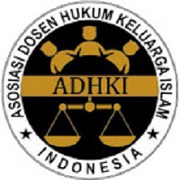Islamic Law Challenges in Addressing Human Trafficking and Sexual Exploitation
DOI:
https://doi.org/10.28918/jhi_v21i2_06Keywords:
Human Trafficking, Islamic Law, Sexual Exploitation, Society, StateAbstract
Human trafficking and sexual exploitation remain complex global problems. Islamic law, as one of the legal systems in the world, has a strategic role in participating in overcoming this problem. However, the Islamic legal norms implementation requires support from the state and society. This research discusses the strategic role and challenges of the law in overcoming human trafficking and sexual exploitation. The research method used normative Islamic law with a philosophical approach. The analysis technique used prescriptive analysis, with the analysis process using Islamic legal reasoning. The research results show that Islamic law has a strategic role in resolving the problem of human trafficking and sexual exploitation. The argument is that, philosophically, Islamic law emphasizes the importance of maintaining human honor and dignity, while theoretically, Islamic law recognizes two main concepts in punishment, namely hudud and ta'zir. Hudud is a punishment determined by Allah and has clear rules in the Quran and Hadith. Meanwhile, ta'zir is a punishment determined by a judge for the benefit of society. The challenges of Islamic law in overcoming human trafficking and sexual exploitation are a lack of understanding of Islamic legal norms, which requires human values and justice; Islamic law is not implementable; and there is a perception that the principles of Islamic law can only be applied in Islamic countries. Therefore, global Muslim countries and communities are the main actors in maximizing the application of Islamic legal principles in overcoming human trafficking and sexual exploitation.
References
Ab Hamid, Zuraini, and Khairil Azmin Mokhtar. “Human Trafficking: The International, Malaysian Legal Framework and Shariah Perspectives.” IIUM Law Journal 21, no. 2 (2013): 287–307. https://doi.org/10.31436/iiumlj.v21i2.105.
ABDULLAH, Rastugo Hameed. “التعزير في الفقه الإسلامي.” The Journal of Academic Social Science 121, no. 121 (2021): 361–76. https://doi.org/10.29228/ASOS.52602.
Alkharji, Abdulatif Abdullah S. “Human Trafficking and Islamic Law.” JL Pol’y & Globalization 131 (2023): 13. https://doi.org/10.7176/JLPG/131-02.
AlMatrooshi, Ali Mohammed, Syed Raza Shah Gilani, and Bahaudin G Mujtaba. “Assessment of Mandatory Reporting Laws to Break the Silence of Child Sexual Abuse: A Case Study in the United Arab Emirates.” SN Social Sciences 1, no. 8 (2021): 209. https://doi.org/10.1007/s43545-021-00216-4.
Alwadeai, Aref Abdullah Mohmmed. “الإطار القانوني لجرائم االاتجار بالبشر في دولة الإمارات العربية المتحدة: The Legal Framework on Human Trafficking in the UAE.” Al-Hikmah: International Journal of Islamic Studies and Human Sciences 4, no. 4 (2021): 419–36. https://doi.org/10.46722/hikmah.v4i4.202.
Amahazion, FikreJesus. “Human Trafficking: The Need for Human Rights and Government Effectiveness in Enforcing Anti-Trafficking.” Global Crime 16, no. 3 (2015): 167–96. https://doi.org/10.1080/17440572.2015.1019613.
Ambarwati, Ike Dwi, Muhammad Kamil, and Ali Roziqin. “The Effectiveness of a Task Force for Preventing Sexual Exploitation: Evidence from Human Trafficking (Women and Children) in East Nusa Tenggara, Indonesia.” In 2nd International Conference on Law and Human Rights 2021 (ICLHR 2021), 443–50. Atlantis Press, 2021. https://doi.org/10.2991/assehr.k.211112.057.
An-Na’im, Abdullahi Ahmed. “Islam, Islamic Law and the Dilemma of Cultural Legitimacy for Universal Human Rights 1.” In Asian Perspectives on Human Rights, 31–54. Routledge, 2021.
Baderin, Mashood A. “Establishing Areas of Common Ground between Islamic Law and International Human Rights.” The International Journal of Human Rights 5, no. 2 (2001): 72–113. https://doi.org/10.1080/714003711.
Bensaid, Benaouda, Salah ben Tahar Machouche, and Mustafa Tekke. “An Islamic Spiritual Alternative to Addiction Treatment and Recovery.” Al-Jami’ah: Journal of Islamic Studies 59, no. 1 (2021): 127–62. https://doi.org/https://doi.org/10.14421/ajis.2021.591.127-162.
Burbano, Danilo, and Myriam Hernandez-Alvarez. “Identifying Human Trafficking Patterns Online.” In 2017 IEEE Second Ecuador Technical Chapters Meeting (ETCM), 1–6. IEEE, 2017. https://doi.org/10.1109/ETCM.2017.8247461.
Campos, Denise Carvalho, and Lílian Caroline Urnau. “Sexual Exploitation Of Children And Adolescents: A Reflection Of The Role Played By Schools.” Psicologia Escolar e Educacional 25 (2021). https://doi.org/10.1590/2175-35392021221612.
Chuang, Janie. “Beyond a Snapshot: Preventing Human Trafficking in the Global Economy.” Global Legal Studies 13, no. 1 (2006): 137–63. https://doi.org/10.2979/gls.2006.13.1.137.
Daniel-Wrabetz, Joana, and Rita Penedo. “Trafficking in Human Beings in Time and Space. A Socioecological Perspectiv.” In The Illegal Business of Human Trafficking, 1–19. Springer, 2014. https://doi.org/10.1007/978-3-319-09441-0_1.
Deb, Sibnath, Aleena Maria Sunny, Bishakha Majumdar, Sibnath Deb, Aleena Maria Sunny, and Bishakha Majumdar. “Child Trafficking for Prostitution: The Exploitation of Poverty-Stricken Situation.” Disadvantaged Children in India: Empirical Evidence, Policies and Actions, 2020, 49–83. https://doi.org/10.1007/978-981-15-1318-3_2.
Fong, Rowena, and Jodi Berger Cardoso. “Child Human Trafficking Victims: Challenges for the Child Welfare System.” Evaluation and Program Planning 33, no. 3 (2010): 311–16. https://doi.org/10.1016/j.evalprogplan.2009.06.018.
Gerassi, Lara. “From Exploitation to Industry: Definitions, Risks, and Consequences of Domestic Sexual Exploitation and Sex Work Among Women and Girls.” Journal of Human Behavior in the Social Environment 25, no. 6 (2015): 591–605. https://doi.org/10.1080/10911359.2014.991055.
Gerassi, Lara, Andrea Nichols, and Erica Michelson. “Lessons Learned: Benefits and Challenges in Interagency Coalitions Addressing Sex Trafficking and Commercial Sexual Exploitation.” Journal of Human Trafficking 3, no. 4 (2017): 285–302. https://doi.org/https://doi.org/10.1080/23322705.2016.1260345.
Gharaibeh, Fakir Al, and Laura Gibson. “Care and Rehabilitation Services to Child Victims of Abuse in the United Arab Emirates: Examples of Innovation.” Children and Youth Services Review 101 (2019): 87–98. https://doi.org/10.1016/j.childyouth.2019.03.049.
HAMDEN, Muhammer Nur. “مفهوم التعزير في الفقه السياسي دراسة مقارنة بمفهوم التقنين.” İlahiyat Akademi, no. 16 (2022): 207–32. https://doi.org/10.52886/ilak.1194904.
Hickle, Kristine, and Dominique Roe-Sepowitz. “‘Curiosity and a Pimp’: Exploring Sex Trafficking Victimization in Experiences of Entering Sex Trade Industry Work Among Participants in a Prostitution Diversion Program.” Women & Criminal Justice 27, no. 2 (2017): 122–38. https://doi.org/10.1080/08974454.2015.1128376.
Hughes, Donna M. “Trafficking in Human Beings in the European Union: Gender, Sexual Exploitation, and Digital Communication Technologies.” Sage Open 4, no. 4 (2014). https://doi.org/10.1177/2158244014553585.
Ibrahim, Abadir M. “Islamic Law-Ethics and the Struggle against Slavery and Human Trafficking.” In Human Flourishing: The End of Law, 448–81. Brill Nijhoff, 2023. https://doi.org/10.1163/9789004524835_015.
Karimullah, Suud Sarim. “For True Humanity: Harmonization of Islamic Law and Human Rights Towards Universal Justice.” Matan: Journal of Islam and Muslim Society 5, no. 2 (2023): 40–56. https://doi.org/10.20884/1.matan.2023.5.2.9125.
———. “From Tradition to Mainstream: Understanding the Integration of Islamic Law in Various Global Settings.” Justicia Islamica 20, no. 2 (2023): 214–40. https://doi.org/10.21154/justicia.v20i2.6478.
———. “The Implications Of Islamic Law On The Rights Of Religious Minorities In Muslim-Majority Countries.” MILRev: Metro Islamic Law Review 2, no. 2 (2023): 90–114. https://doi.org/10.32332/milrev.v2i2.7847.
———. “The Relevance of the Concept of Justice in Islamic Law to Contemporary Humanitarian Issues.” Al-Ahkam: Jurnal Ilmu Syari’ah Dan Hukum 8, no. 1 (2023): 83–98. https://doi.org/10.22515/alahkam.v8i1.7654.
Lijnders, Laurie, and Sara Robinson. “From the Horn of Africa to the Middle East: Human Trafficking of Eritrean Asylum Seekers across Borders.” Anti-Trafficking Review, no. 2 (2013): 137–54. https://doi.org/10.14197/atr.20121329.
Limoncelli, Stephanie A. “The Trouble with Trafficking: Conceptualizing Women’s Sexual Labor and Economic Human Rights.” In Women’s Studies International Forum, 32:261–69. Elsevier, 2009. https://doi.org/10.1016/j.wsif.2009.05.002.
Mahdavi, Pardis, and Christine Sargent. “Questioning the Discursive Construction of Trafficking and Forced Labor in the United Arab Emirates.” Journal of Middle East Women’s Studies 7, no. 3 (2011): 6–35. https://doi.org/10.2979/jmiddeastwomstud.7.3.6.
McClain, Natalie M, and Stacy E Garrity. “Sex Trafficking and the Exploitation of Adolescents.” Journal of Obstetric, Gynecologic & Neonatal Nursing 40, no. 2 (2011): 243–52. https://doi.org/10.1111/j.1552-6909.2011.01221.x.
Mezhi Mejbel Mezhi Bathal Alrashedi, Ali. “In the Context of Both International Law and the Application of Islamic Sharia Law, How Effective Have Kuwait and the Kuwaiti Legal System Been in Addressing, Preventing and Combating Human Trafficking?” University of Kent, 2017. https://doi.org/10.22024/UniKent/01.02.62860.
Miele, Cécile, Aurélie Maquigneau, Christian C Joyal, Ingrid Bertsch, Océane Gangi, Hakim Gonthier, Cloé Rawlinson, Sylvie Vigourt-Oudart, Emeline Symphorien, and Ainslie Heasman. “International Guidelines for the Prevention of Sexual Violence: A Systematic Review and Perspective of WHO, UN Women, UNESCO, and UNICEF’s Publications.” Child Abuse & Neglect 146 (2023): 106497. https://doi.org/10.1016/j.chiabu.2023.106497.
Muhajir, Muhajir, Ihda Shofiyatun Nisa, Akhmad Munawar, and Suud Sarim Karimullah. “Agus Moh Najib’s Thoughts on the Interconnection of Islamic Law and National Law.” Jurnal Ilmiah Al-Syir’ah 21, no. 1 (2023): 86–103. https://doi.org/10.30984/jis.v21i1.2321.
Nurhayati, Nurhayati, Muhammad Syukri Albani Nasution, Reni Ria Armayani Hasibuan, and Hazrul Afendi. “Human Trafficking in The Perspective of Maqashid Al-Sharia.” Jurnal Ilmiah Islam Futura 22, no. 2 (2022): 150–63.
NUSAIRAT, WAEL MOHAMMED. “Criminal Responsibility For Sexual Exploitation Of Children Via Electronic Means Of Communication Considering Saudi Arabia’s Anti-Cyber Crime Law.” Russian Law Journal 11, no. 2 (2023): 178–91. https://doi.org/10.52783/rlj.v11i2.523.
Potrafke, Niklas. “Policies against Human Trafficking: The Role of Religion and Political Institutions.” Economics of Governance 17 (2016): 353–86. https://doi.org/10.1007/s10101-016-0181-5.
Powell, Emilia Justyna. “Islamic Law States and the International Court of Justice.” Journal of Peace Research 50, no. 2 (2013): 203–17. https://doi.org/10.1177/0022343312470275.
Rabbani, Mustafa Raza, Abu Bashar, Nishad Nawaz, Sitara Karim, Mahmood Asad Mohd Ali, Habeeb Ur Rahiman, and Md Shabbir Alam. “Exploring the Role of Islamic Fintech in Combating the Aftershocks of COVID-19: The Open Social Innovation of the Islamic Financial System.” Journal of Open Innovation: Technology, Market, and Complexity 7, no. 2 (2021): 136. https://doi.org/10.3390/joitmc7020136.
Rashad, Suzi Mohamed. “Child Trafficking Crime and Means of Fighting It: Egypt as a Case Study.” Review of Economics and Political Science 8, no. 4 (2023): 290–308. https://doi.org/10.1108/REPS-03-2019-0029.
Reid, Joan A, and Shayne Jones. “Exploited Vulnerability: Legal and Psychological Perspectives on ChiExploited Vulnerability: Legal and Psychological Perspectives on Child Sex Trafficking Victimsd Sex Trafficking Victims.” Victims and Offenders 6, no. 2 (2011): 207–31. https://doi.org/10.1080/15564886.2011.557327.
Sadia, Haleema, and Hafsa Abbasi. “Revisiting Human Trafficking, an Emerging Phenomenon in an Islamic Perspective.” Al-Az̤vā 37, no. 58 (2022): 23–40. https://doi.org/10.51506/al-az̤vā.v37i58.592.
Sambas, Nandang. “The Development of Trafficking as a Form of Human Rights Violations.” In Social and Humaniora Research Symposium (SoRes 2018), 422–25. Atlantis Press, 2019. https://doi.org/10.2991/sores-18.2019.97.
Saner, Raymond, Lichia Yiu, and Laurel Rush. “The Measuring and Monitoring of Human Trafficking.” Public Administration and Policy 21, no. 2 (2018): 94–106. https://doi.org/https://doi.org/10.1108/PAP-10-2018-011.
Soliman, Hussein Hassan, Nagwa Ibrahim Alsharqawi, and Mustafa Ahmed Younis. “Is Tourism Marriage of Young Girls in Egypt a Form of Child Sexual Abuse? A Family Exploitation Perspective.” Journal of Child Sexual Abuse 27, no. 2 (2018): 122–40. https://doi.org/10.1080/10538712.2018.1425945.
Tan, Olivia Swee Leng, Rossanne Gale Vergara, Raphael C W Phan, Shereen Khan, and Nasreen Khan. “Human Trafficking and Cyber Laws in Malaysia.” Encyclopedia of Criminal Activities and the Deep Web, 2020, 518–32. https://doi.org/10.4018/978-1-5225-9715-5.ch035.
Tomás, Júlia. “Trafficking in Human Beings for Sexual Exploitation and Media Discourses.” In Sexuality, Oppression and Human Rights, 75–85. Brill, 2015. https://doi.org/10.1163/9781848884243_007.
Viergever, Roderik F, Haley West, Rosilyne Borland, and Cathy Zimmerman. “Health Care Providers and Human Trafficking: What Do They Know, What Do They Need to Know? Findings from the Middle East, the Caribbean, and Central America.” Frontiers in Public Health 3 (2015): 6. https://doi.org/10.3389/fpubh.2015.00006.
Ward, Tony, and Shahrzad Fouladvand. “Human Trafficking, Victims’ Rights and Fair Trials.” The Journal of Criminal Law 82, no. 2 (2018): 138–55. https://doi.org/10.1177/0022018318761680.
Yılmaz Irmak, Türkan, Şeyda Aksel, and Dennis Thompson. “Coping Strategies and Depression among College Students Following Child Sexual Abuse in Turkey.” Journal of Child Sexual Abuse 25, no. 8 (2016): 881–94. https://doi.org/10.1080/10538712.2016.1236871.
Downloads
Published
How to Cite
Issue
Section
License
Copyright (c) 2023 Nur Insani; Suud Sarim Karimullah; Sulastri

This work is licensed under a Creative Commons Attribution-ShareAlike 4.0 International License.
Jurnal Hukum Islam use a variety of waivers and licenses that are specifically designed for and appropriate for the treatment of data:
- Open Data Commons Attribution License, http://www.opendatacommons.org/licenses/by/1.0/(default)
- Creative Commons CC-Zero Waiver, http://creativecommons.org/publicdomain/zero/1.0/
- Open Data Commons Public Domain Dedication and License, http://www.opendatacommons.org/licenses/pddl/1-0/
Other data publishing licenses may be allowed as exceptions (subject to approval by the editor on a case-by-case basis) and should be justified with a written statement from the author, which will be published with the article.



















.png)




